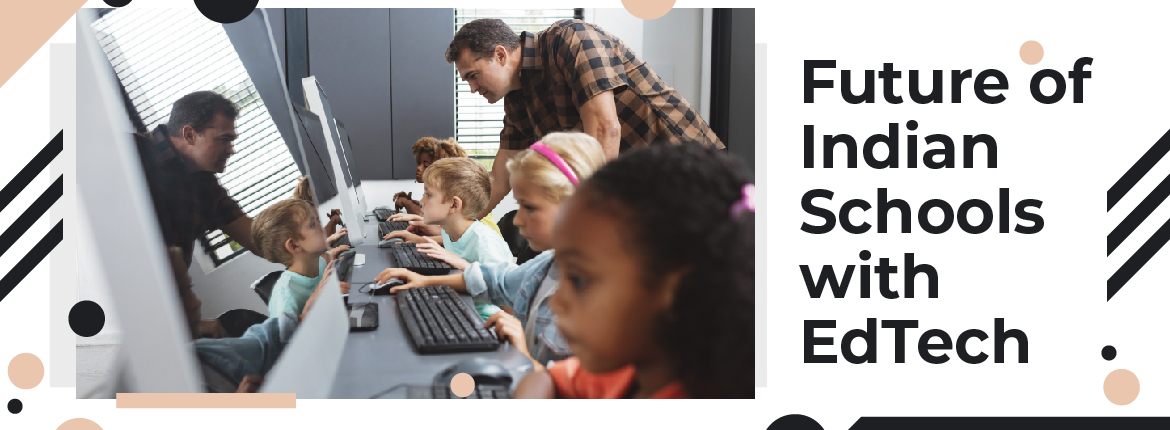
Future of Indian Schools with EdTech
Today, a major challenge before the Indian economy is how to utilize the demographic dividend accrued from a large share of its people of working age. Here, it is to make clear that this dividend can only be obtained with a well-educated workforce and that is possible if the school system in India is made technologically strong. In the last few decades, despite increasing school enrolment, India remained in its struggling phase to deliver actual learning. These problems can be addressed by delivering better lesson, and Education Technology (EdTech).
EdTech will help deliver high quality lessons
The arising problems as discussed above can be addressed by giving better lessons, training the teachers and motivating the students that is possible by Education Technology (EdTech), especially information and communication technology. In recent years, there has been observed a swift fall in cost of computing. Tablets are costing as low as Rs. 2000. Moreover, India has got the most affordable mobile data plans in the world. Thus, at its most basic, EdTech will help you deliver high quality lessons in various formats such as video, games and interactive tutorials. Among myriads of teachers—some teach well while some do not, but a well-prepared video can use the very best teachers and help them with graphics and animations. After this video is prepared, millions of students can watch it for several years. They can also get interactive quizzes and have instant feedback.
Tailoring lessons according to the students’ progress
A substantial advantage of edtech is its flair to tailor the lessons according to the students’ progress. Take Mindspark for example. It’s a computer-assisted learning software developed by an Indian company that delivers lessons through videos, games and questions on computers and tablets. The software evaluates the learning level of each student, puts content appropriate for this level and fine tune the problem in accordance with the progress of the students.
The initiative is cost-effective
MIT’s J-PAL in a study analyzed a version of Midspark targeting at 619 students in Delhi’s government schools and found laudable achievements in Maths and Hindi. It was a cost-effective initiative with just a monthly cost of approximately Rs. 1000 each student and around the cost of Rs.150 if the program was extended.
Simple behavioural interventions
Backed by research, Simple behavioural interventions are another application of EdTech that is delivered through technology, often by SMS. Though these interventions have moderate benefits, they are very much affordable due to very cheap cost. SMSes help a lot in apprising the parents with their wards’ performance including their attendance and how they did in exams.
A complement and substitute for teachers
In such schools where the teachers are not able to teach well or are not found regular taking their classes, EdTech can bring a baseline of education inputs to students for their self-study. In Kenya, the coaches equipped with tablets come to classrooms, they evaluate students’ reading skills, and EdTech helps the teachers by giving them tailor-made suggestions and upload the analyzed data to administrators. And their purpose is to associate able teachers with technology. Thus, EdTech is a complement as well as a substitute for teachers.
India is an ideal country for EdTech
From various perspectives, India is an ideal country to make use of EdTech as its potential impact is enormous. If the students can learn better through EdTech, they can later become a strong workforce to play a significant role in improvement of India’s economy.
